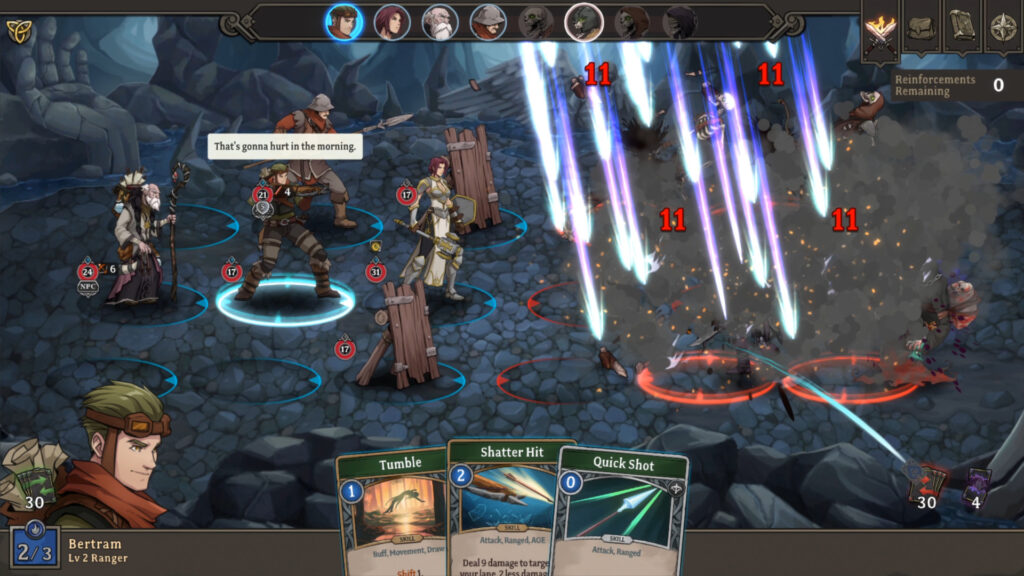
Gordian Quest is the latest deckbuilding roguelite game to enter Early Access. Like many games in the genre, it draws a lot of inspiration from Slay the Spire. What differentiates Gordian Quest from many of its competitors, is that its a lot closer to a traditional party-based RPG.
I’ve now put over 10 hours into the current version of the game, which includes six playable heroes and the first act. Here are my first impressions so far.
Gordian Quest is set centuries after the world fell under a terrible curse. The first act mostly revolves around your band of adventurers trying to drive the undead out of a besieged town. Once the town is secure, your quest shifts to exploring the nearby forests and countryside, as you look for the skeletal Rift Lord responsible for the carnage.
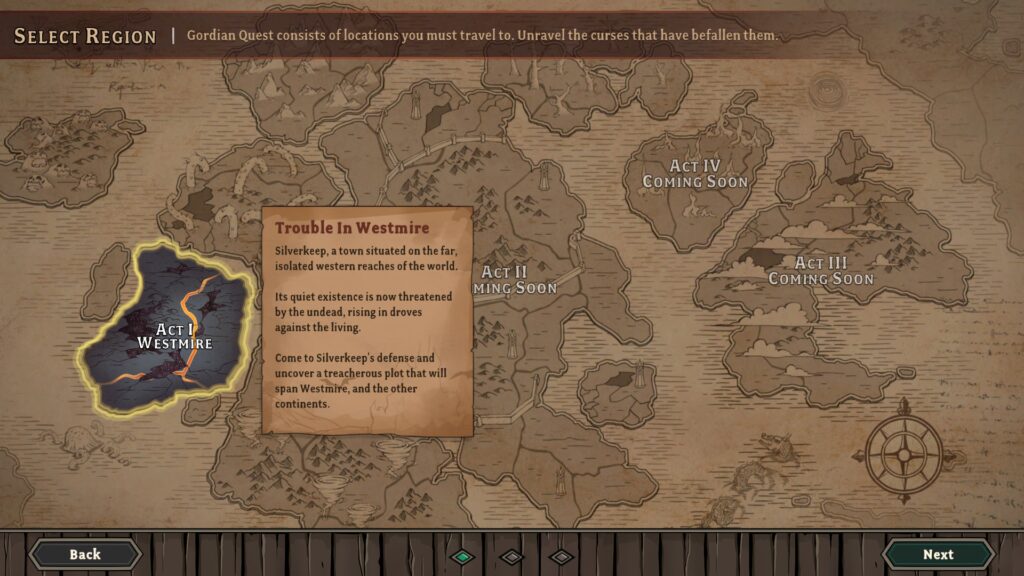
You begin each run of Gordian Quest by selecting your starting hero. There are currently six, and they cover your standard RPG archetypes like Warrior, Ranger, Cleric, Wizard, Druid, and Rogue. The developers are promising potentially 16 more characters before the game leaves Early Access.
While you start with just one hero, you quickly gain the chance to recruit more of them until you have a party of three. The rest will remain in your guild hall, and act mostly as backups if you turn permadeath on.
Sadly, because your benched heroes don’t gain any experience, there really isn’t a reason to switch them out once you have a party you like. There also isn’t really a way to effectively catch them up later on in an act. This is one of many complaints that the developers are aware of, and figuring out how to address.
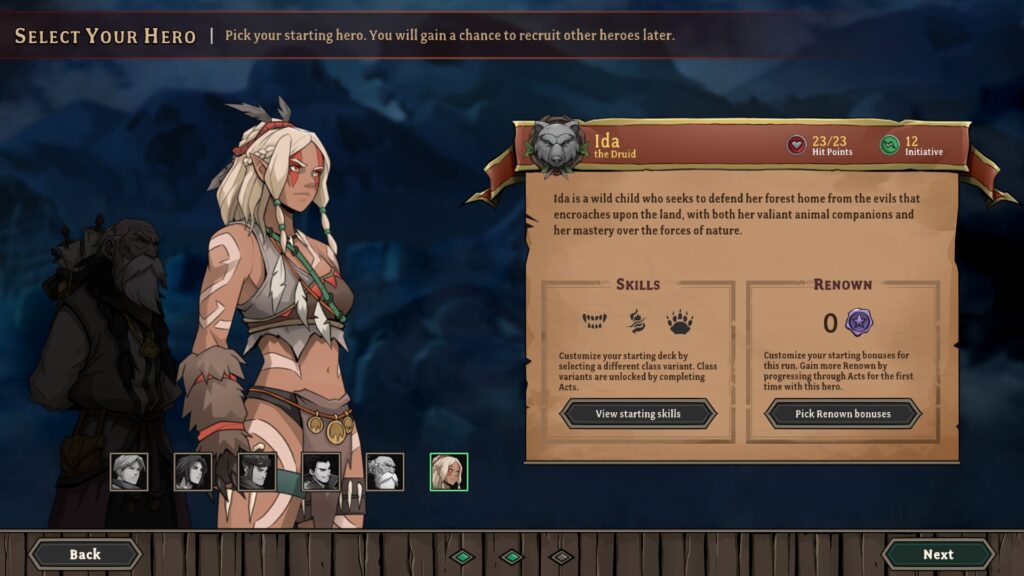
In any case, at set points during the campaign you will gain Renown. Every character in your party will gain Renown when you reach these points, and it can be spent to buy permanent upgrades for that character when you start a new campaign as them.
Once you have your character picked, there are four difficulty settings to choose from, as well as the permadeath roguelike mode I mentioned. The easiest setting gives your characters 50% extra starting health, and should they die, they are resurrected with a few HP left after battle. If your party is wiped, you return to town.
On every other difficulty setting, resurrections requires spending a hefty sum of gold at the church back in town, and a party wipe is the end of your adventure.
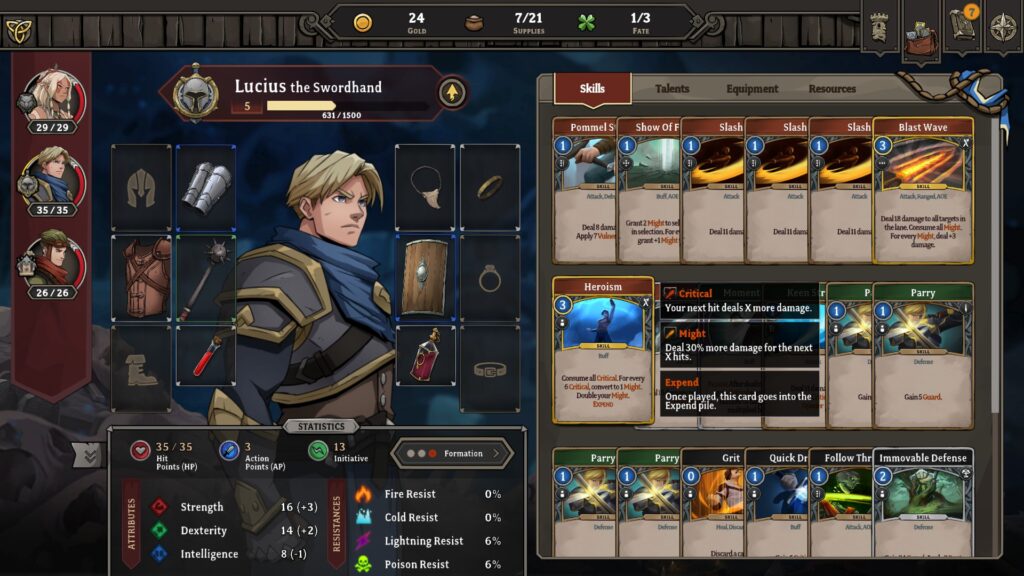
Character progression in Gordian Quest is much closer to a traditional RPG than your typical deckbuilding roguelite. You’ll find loads of loot during your quest, and characters can be equipped with a helmet, chest armor, boots, gloves, a belt, two rings, a necklace, two consumables, a main weapon, and an offhand item.
Each item will grant you a few stat boosts, or damage resistances based on their rarity. Seeing as how this is a deckbuilding game, many items also add a new card to your deck as long as they are equipped.
This is a mechanic that some people are a bit divided on, because sometimes you want to keep your deck lean and focused. On the other hand, items that grant cards are a good way to get cards your class wouldn’t otherwise have access to.
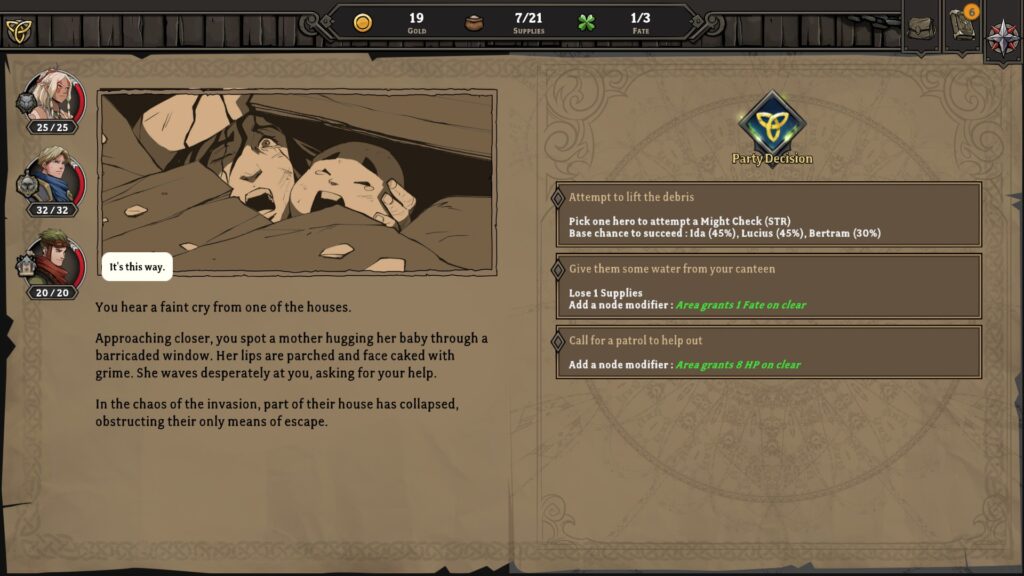
Your characters also have three core stats, those being Strength, Intelligence, and Dexterity. These stats not only buff cards that use the relevant stat, but are used in tabletop RPG-style skill checks.
You’ll often find events on the game’s node-based maps, and many will have a skill check to determine the outcome. Sometimes you’ll need to pick just one character to try the skill check, while other times it might target everyone in the party.
The skill checks are based on passing a target number with a d20 roll, with that character’s relevant stat providing a modifier. Characters can get an even larger bonus by choosing to exhaust a card in their deck. This turns the card into an unusable “dead draw” during combat, and can be restored with certain potions, or by resting at camps or inns.
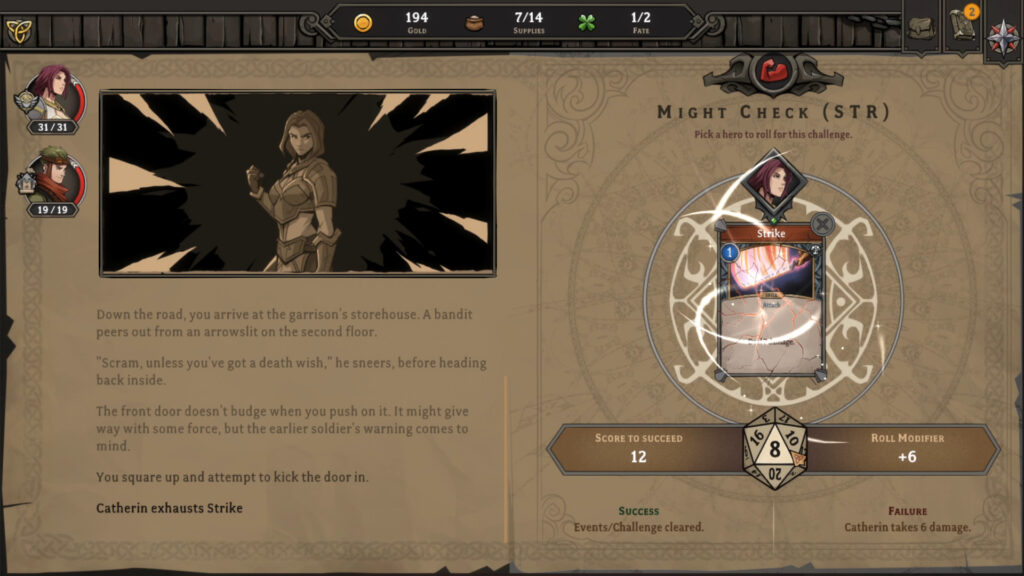
When it comes to the deckbuilding part of Gordian Quest, it’s all based around a character’s skill grid. As with all games in the genre, characters start with a deck of basic cards associated with their class. When a character levels up, they can pick a node from their skill grid.
The most common skill grid nodes allow you to draft a card, remove a card from your deck, or provide some stat boosts unassociated with cards, like increased maximum health or initiative.
When you choose to add a new card to your deck, you are given a choice between three cards from your class. If you don’t like any of them, you can instead choose to replace a card in your deck. This allows you to roll up a different selection of three cards, and your choices are based on the type and rarity of the card you are getting rid of.
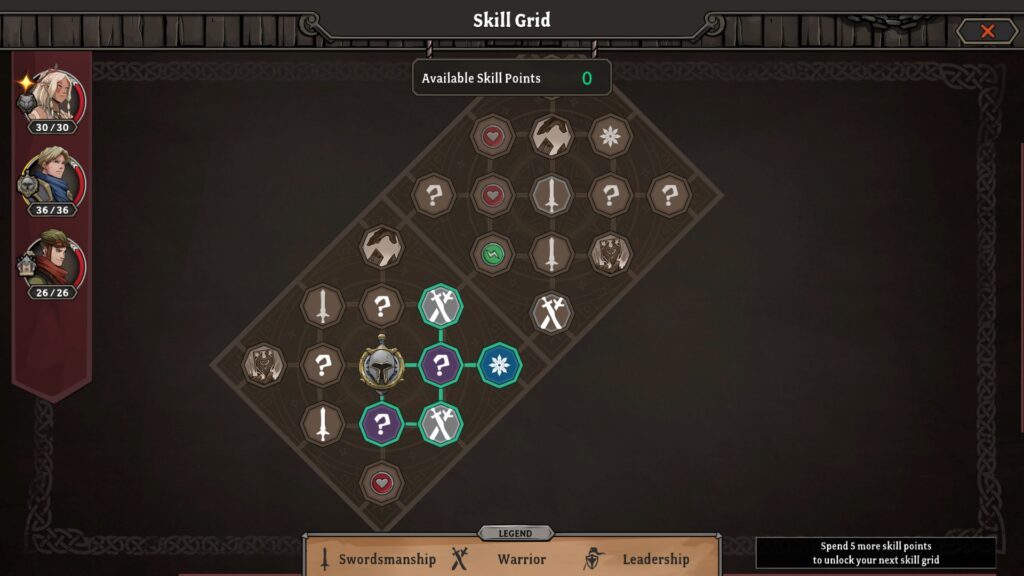
Each class has three “schools” of cards. The Druid, for example, has Primal, Animal Kinship, and Elemental. Primal cards are all about getting in the thick of the fight, and this branch is where you gain access to animal transformations.
Animal Kinship is focused on summoning spirit animals to help absorb damage and attack enemies. Finally, Elemental are various spells related to the forces of nature, such as lightning strikes or lava flows.
After you purchase five skills on your grid, you’ll gain access to another grid that you can attach along one of the edges of the previous grid. Since you have to build a “path” of interconnecting nodes when buying skills, you’ll need to carefully consider where you slot your next grid.
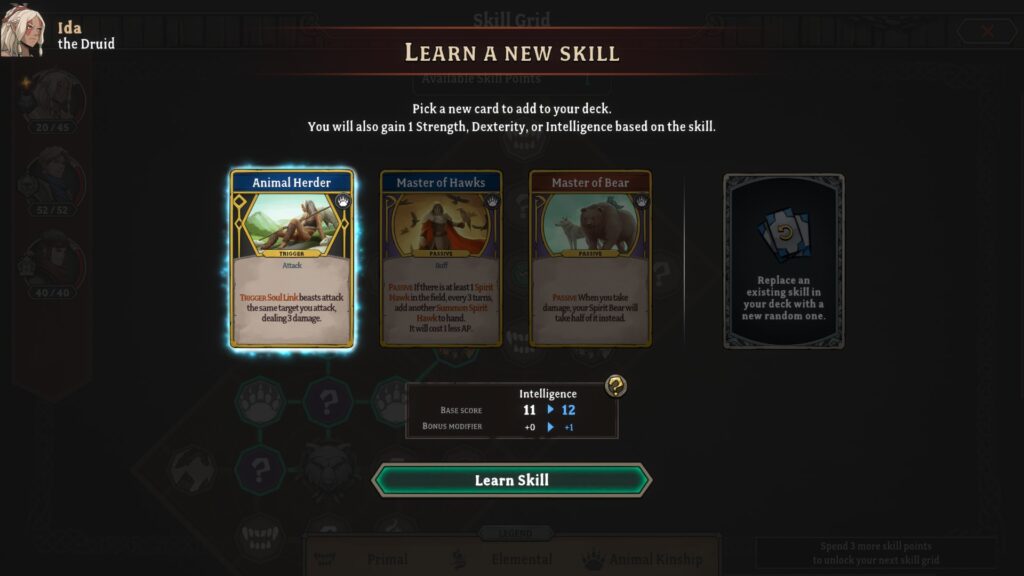
The actual card battles themselves take a lot of cues from Slay the Spire, but do a lot of interesting things to make Gordian Quest stand out from its peers.
The battles take place on grids divided into three rows, and there are a lot of shenanigans based on positioning like you’d expect from a more traditional strategy-RPG.
The front row is the first row to take damage from melee attacks. The middle row is neutral, and generally doesn’t affect targeting. Finally, the last row is where enemy ranged units tend to focus their attacks. You can choose what rows each member of your party starts on.
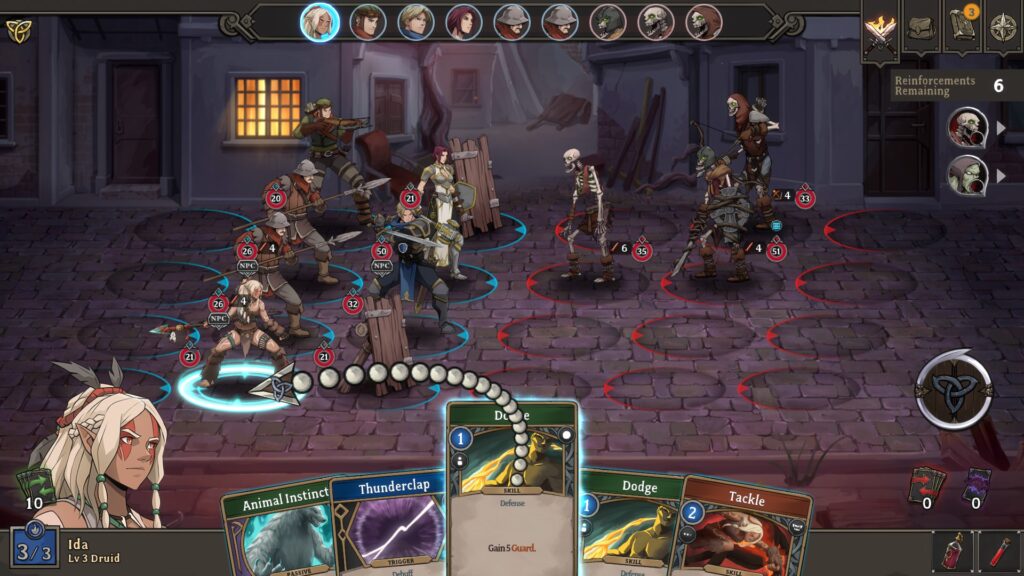
The grid mechanics do more than just determine target prioritization. All cards have limitations on where they can be used as well.
For example, most melee attacks can only target the lanes directly in front of that character. Other cards might be able to target enemies on any row, but only in the lane the attacker is currently in.
Each character has an initiative value that determines when they get their turn, as well as three Action Points. AP is used to play cards in your hand, but can also be used to move around on your side of the grid to get into better positions.
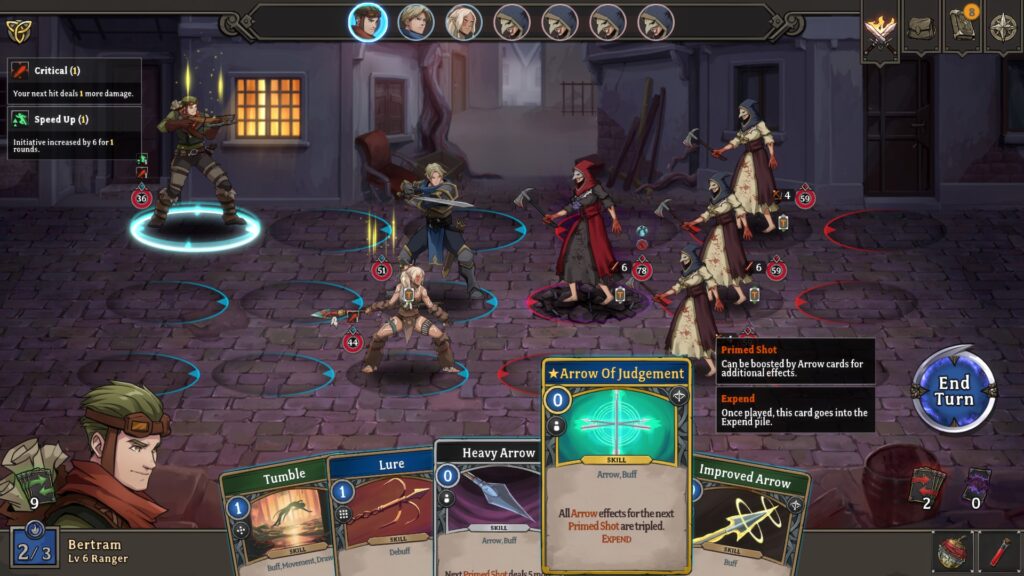
There are a lot of very Slay the Spire-style mechanics at play here. Enemies will telegraph their next action, and you can prevent incoming damage by using defensive cards that grant Guard.
There are various other types of interesting cards besides just your standard attack and defense ones. Passives are cards that grant bonuses as long as they are in your hand.
These cards stay in your hand once drawn, and while it means you’ll draw less new cards each turn, this is often offset with a powerful bonus. One example is the Druid’s Master of Bear card, which allows her to redirect half the damage she would take from an attack onto one of her spirit bear companions.
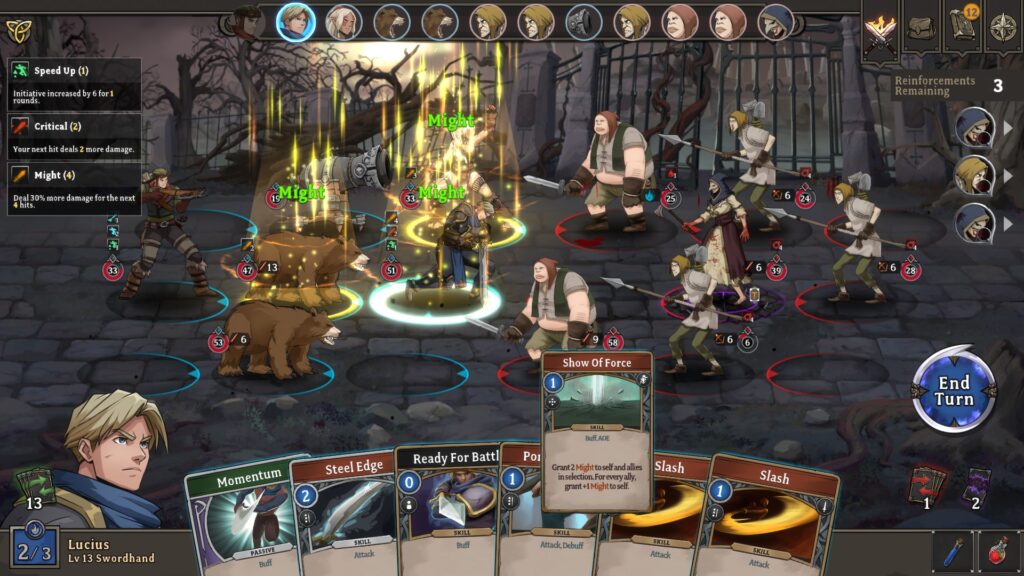
A similar type of card are Trigger cards. These are basically like passive cards that stay in a character’s hand until a certain condition is met. The most common ones involve allowing the owner of the card to perform follow-up attacks when an adjacent character deals damage, further emphasizing the positioning aspect of Gordian Quest‘s combat.
While my early impressions of Gordian Quest are largely very positive, there are still a lot of rough edges that the developers will hopefully address. Perhaps the biggest one is game balance, which is currently all over the place. There are some serious difficulty spikes early on due to the game’s encounter generation, and the way completing events can alter nodes on the map.
The character classes and their starting decks also vary wildly in terms of usefulness and power curve. Most people generally agree that the Druid is currently a vital party member, because of her ability to summon spirit animals.
Your party will almost always be outnumbered, so spirit animals add a less important target to soak up enemy attacks. The Ranger can do this too, because one of his skill schools involves creating turrets.
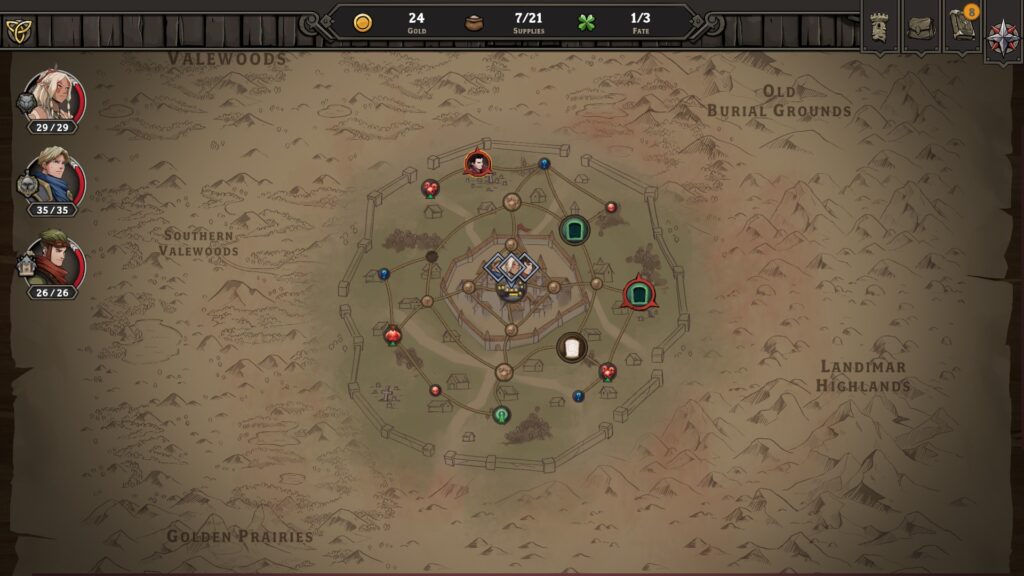
This is important because Guard, in its current form, is very weak. Guard isn’t affected by a character’s stats in the same way that damage is, so most cards that generate Guard only do so in very small amounts.
Throwing out some spirit wolves or gun turrets as fodder are the best way to currently soak up incoming damage, and have the added benefit of chipping away at enemy health pools.
The game’s UI has a lot of usability issues as well. Shops don’t currently have a way to queue up multiple purchases. So, when you get back to town and need to restock on potions and supplies, you need to do so one item at a time. This is odd because there is already a way to mass sell items you don’t need.
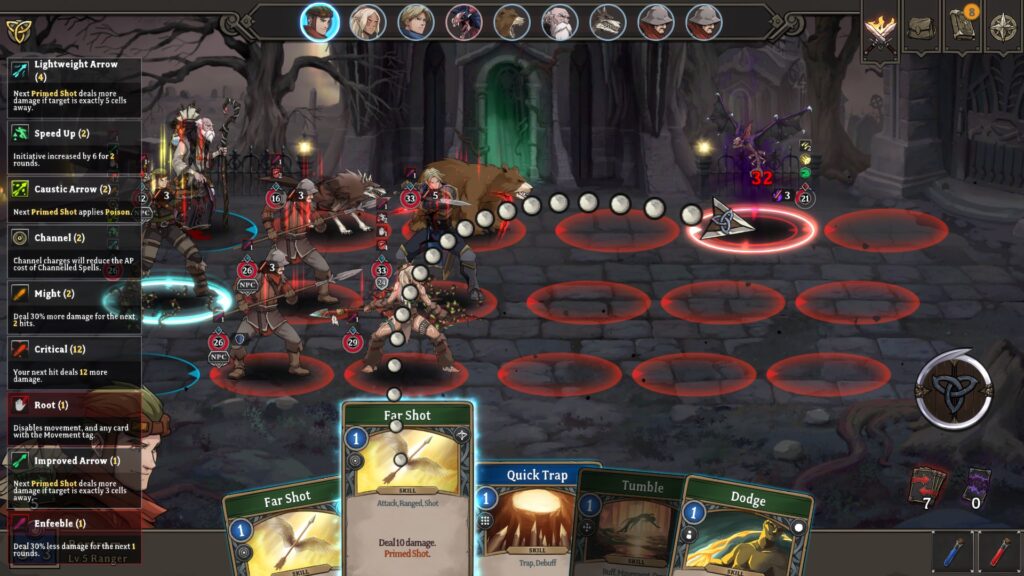
The UI’s tooltips and pop-ups can often get in the way as well. This is most apparent in a battle when a character has multiple buffs, debuffs, and status aliments at once. You can see what I mean in the picture below.
Complaints aside, Gordian Quest has a lot going for it already, and the roadmap of upcoming features sounds fantastic. The developers are promising at least 10 more heroes, side quests, a relationship system, an endless mode, and faction reputation, just to name a few highlights. There are also references to crafting and item sockets in the game, but they aren’t implemented yet.
Its also nice to see that the developers are very active in the Steam forums and receptive to feedback. They have accepted that many of the more common complaints are issues worth addressing as they continue to produce new content for the game. They have even implemented a few suggestions already, like dropping the cost of resurrections a bit.
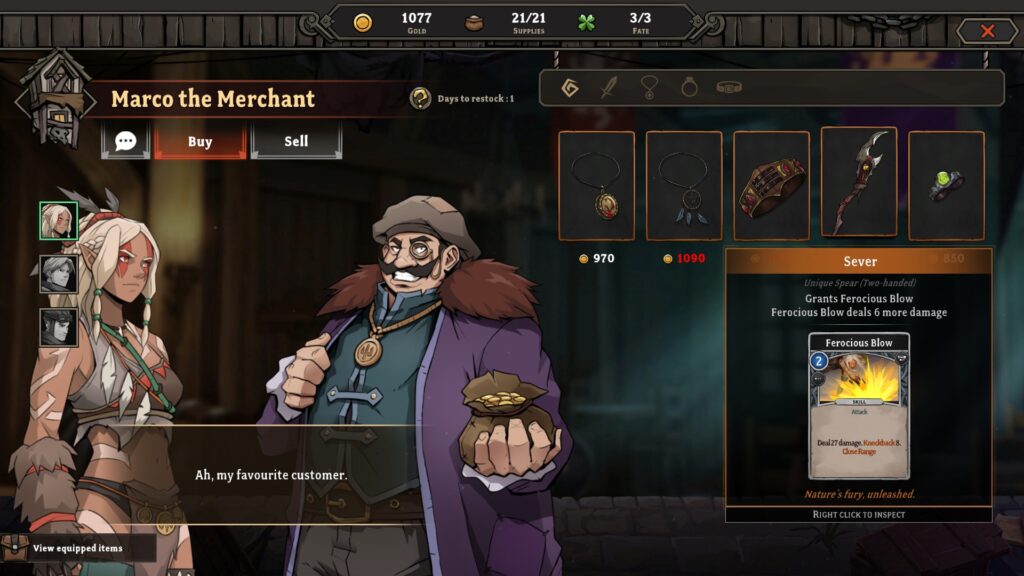
While I did enjoy Slay the Spire, something about Gordian Quest has already hooked me in a way that the former game didn’t. I suppose its probably the greater emphasis on traditional RPG elements and a party-based systems. It certainly has its rough spots to address, but I think Gordian Quest has the potential to be one of the best deckbuilding roguelites on the market once its finished.
If you want to give it a try, Gordian Quest is in Early Access on Steam for $19.99. Despite being so early in development, it already has a sizable chunk of content and replayability. The Early Access phase is expected to take around a year.
Gordian Quest was previewed on Windows PC with a preview copy provided by Mixed Realms. You can find additional information about Niche Gamer’s review/ethics policy here.